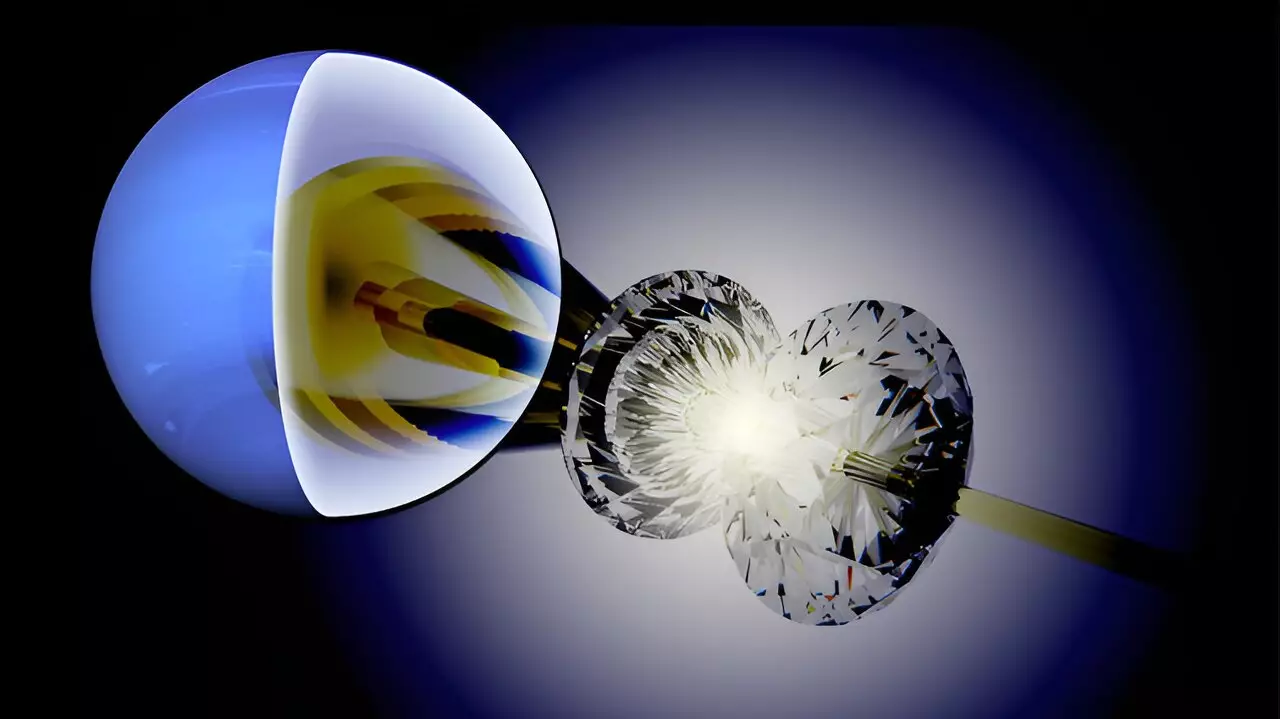Equation of state measurements in extreme pressure environments have always been a challenge for scientists in the field of condensed-matter sciences. A recent paper published in the Journal of Applied Physics by an international team of scientists from Lawrence Livermore National Laboratory (LLNL), Argonne National Laboratory, and Deutsches Elektronen-Synchrotron introduces a new sample configuration that addresses this challenge and provides reliable measurements in pressure regimes previously unattainable. This groundbreaking development marks a significant step forward in the field.
The LLNL’s innovation of the toroidal diamond anvil cell has been instrumental in pushing the static pressure limit in condensed-matter sciences. The ability to reach pressures above 5 million atmospheres, equivalent to Neptune’s interior conditions, has revolutionized the field. However, the next critical advancement was improving sample fabrication for more complex experiments. Static compression experiments at pressures higher than 300 GPa present significant challenges, with the compression environment often being less than ideal. The new sample package developed by the team addresses this issue, providing an improved compression environment and enhancing the quality of equation of state data.
The sample package design involves a 10-step process where the target material is embedded in a uniform capsule of soft metal, serving as a pressure-transmitting medium. This design ensures that stress is uniformly distributed around the sample material, crucial for reliable equation-of-state measurements. The microfabricated sample package fits within a tiny chamber, approximately 20 times smaller than the width of a human hair, in the LLNL-designed toroidal diamond anvil cell. This meticulous design allows for precision in applying pressure to the sample material along a single axis.
The experiments were conducted at Argonne National Laboratory Sector 16 HPCAT and at Deutsches Elektronen-Synchrotron PETRA-III. The scientists tested the methodology on molybdenum with a copper pressure-transmitting medium, showcasing the versatility of the sample package design. The results were promising, with the sample package demonstrating the ability to reliably calibrate equation of state measurements at pressures exceeding two times the pressure limits of traditional diamond anvil-cell-derived equations of state. These findings open up new possibilities in physics, chemistry, and planetary science research.
The development of the sample-encapsulation method marks just the beginning of advancements in equation of state calibrations at multi-megabar conditions. The team anticipates that this innovative approach will expand the scope of static compression data in the field, offering new insights into materials science at extreme pressure regimes. Co-authors of the study, including researchers from LLNL and Deutsches Elektronen-Synchrotron, have contributed to this pioneering work that sets the stage for future breakthroughs in the field.
The recent advancements in equation of state measurements in extreme pressure environments represent a significant leap forward for the field of condensed-matter sciences. The innovative sample package design developed by the international team of scientists opens up new opportunities for reliable and precise measurements at pressures previously unattainable. This breakthrough lays the foundation for further exploration and discovery in physics, chemistry, and planetary science, with implications for a wide range of scientific disciplines.


Leave a Reply